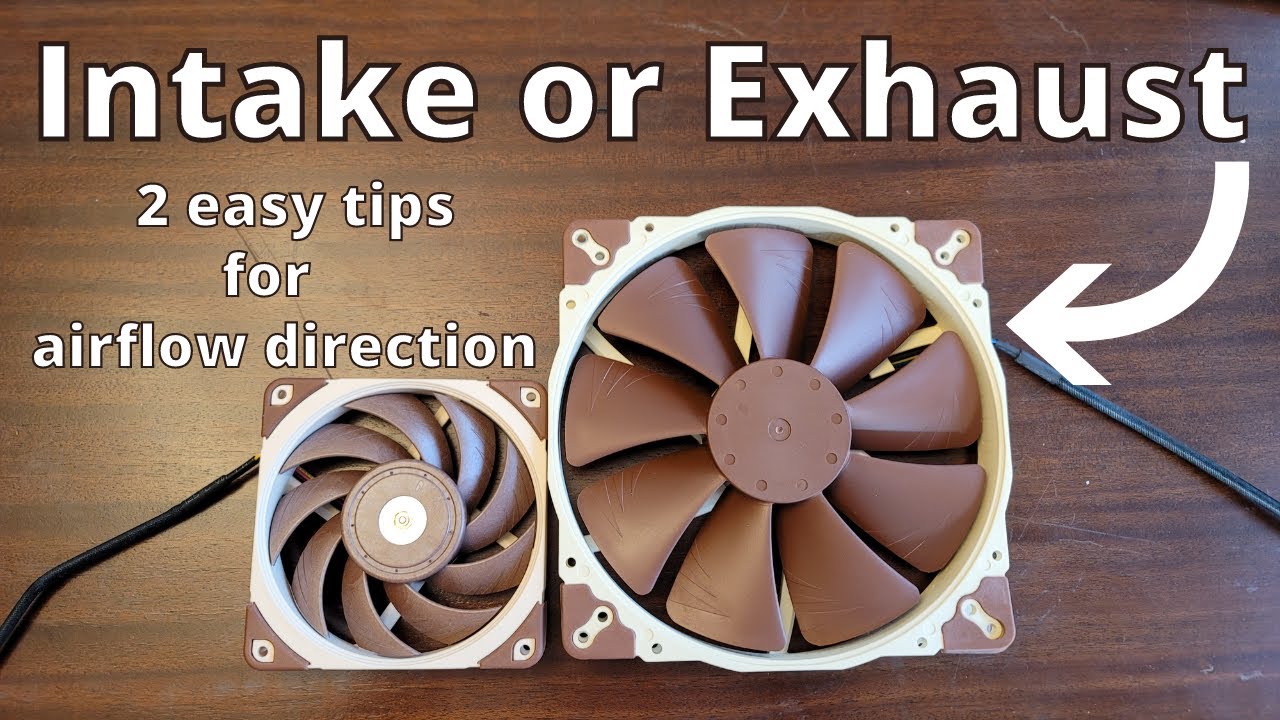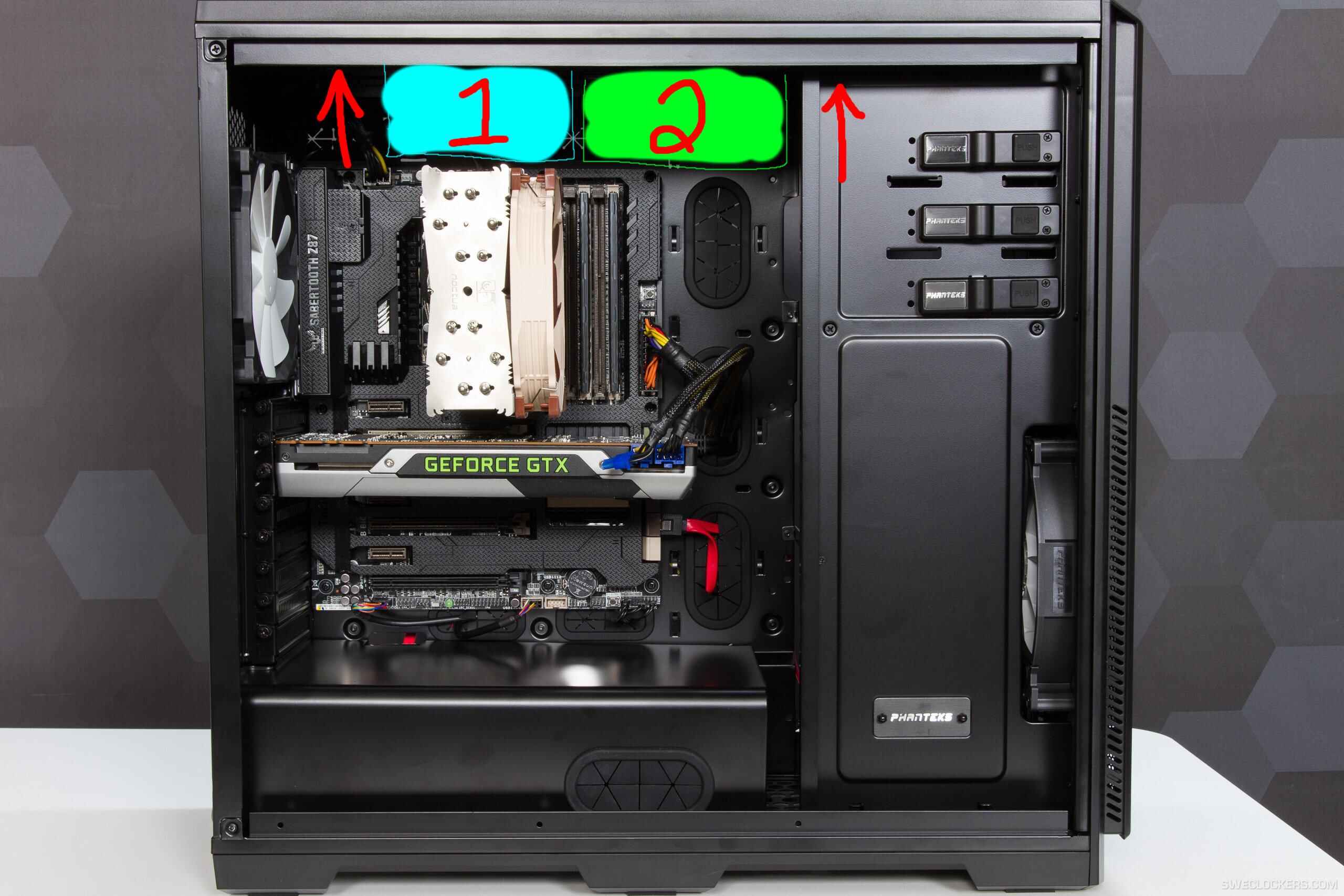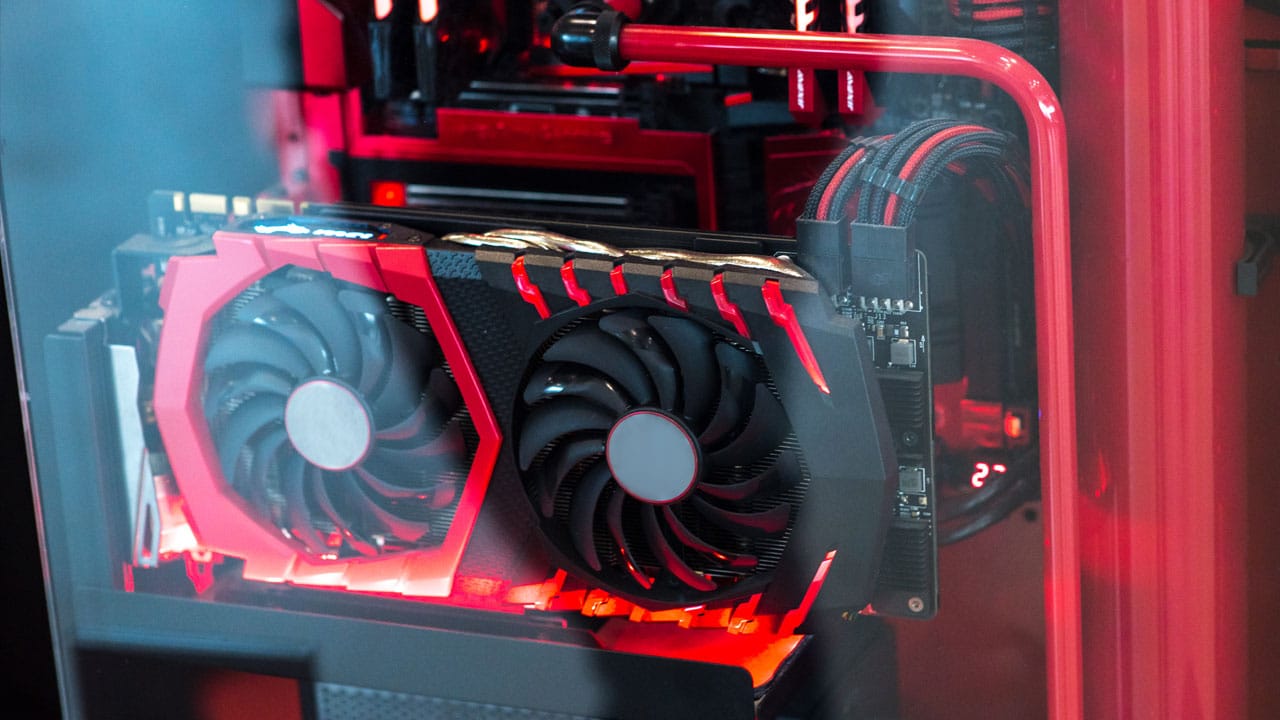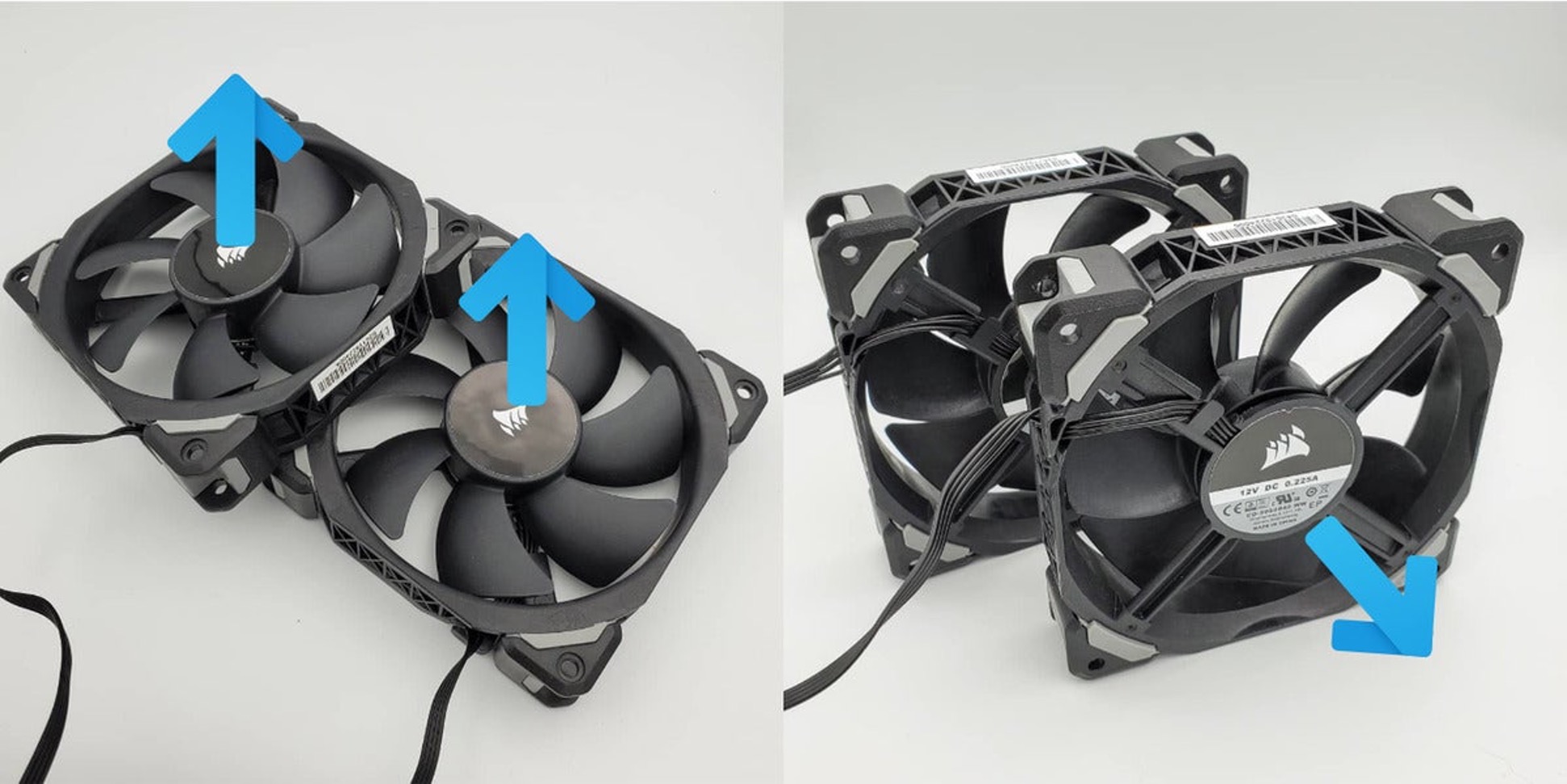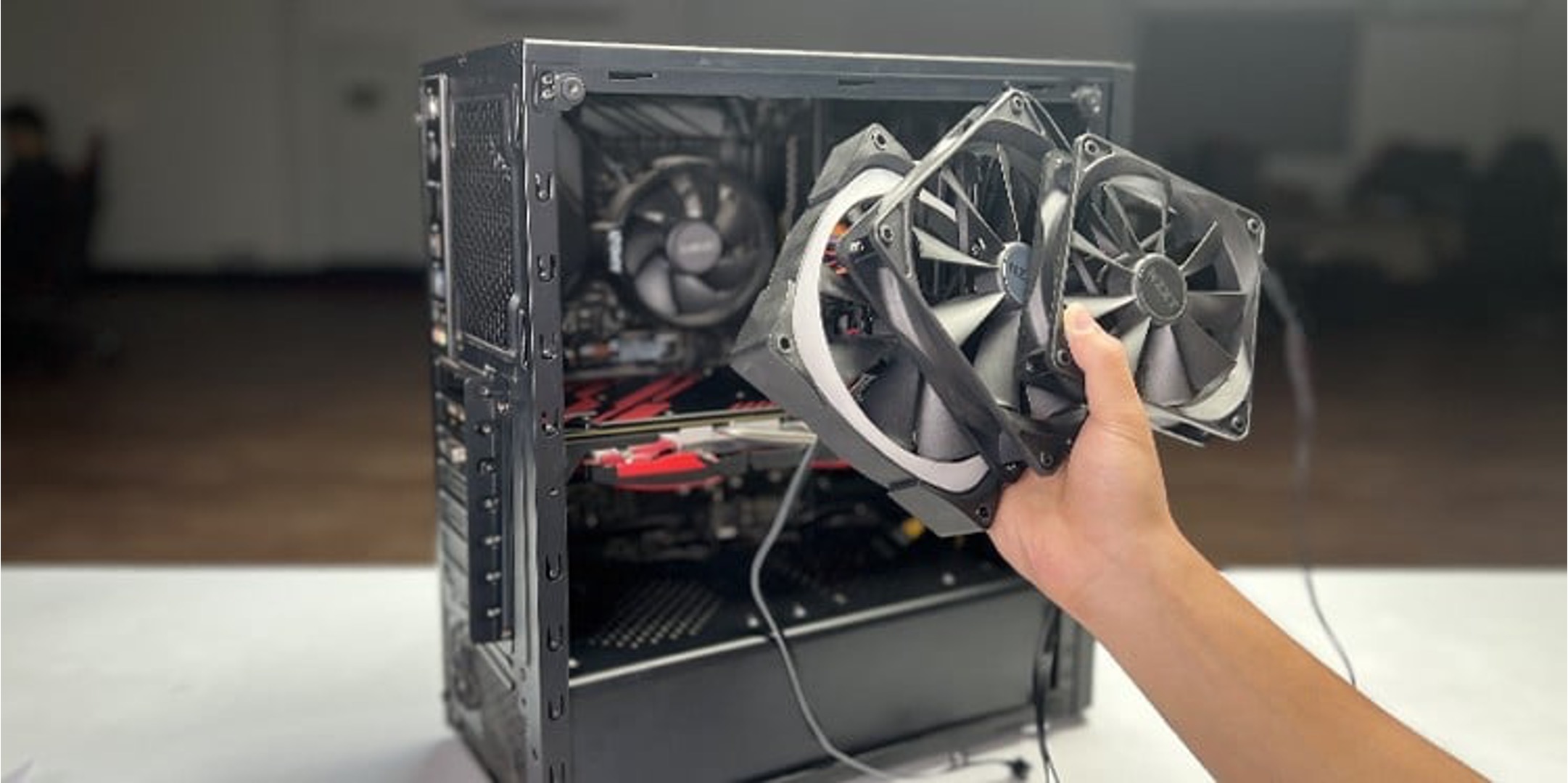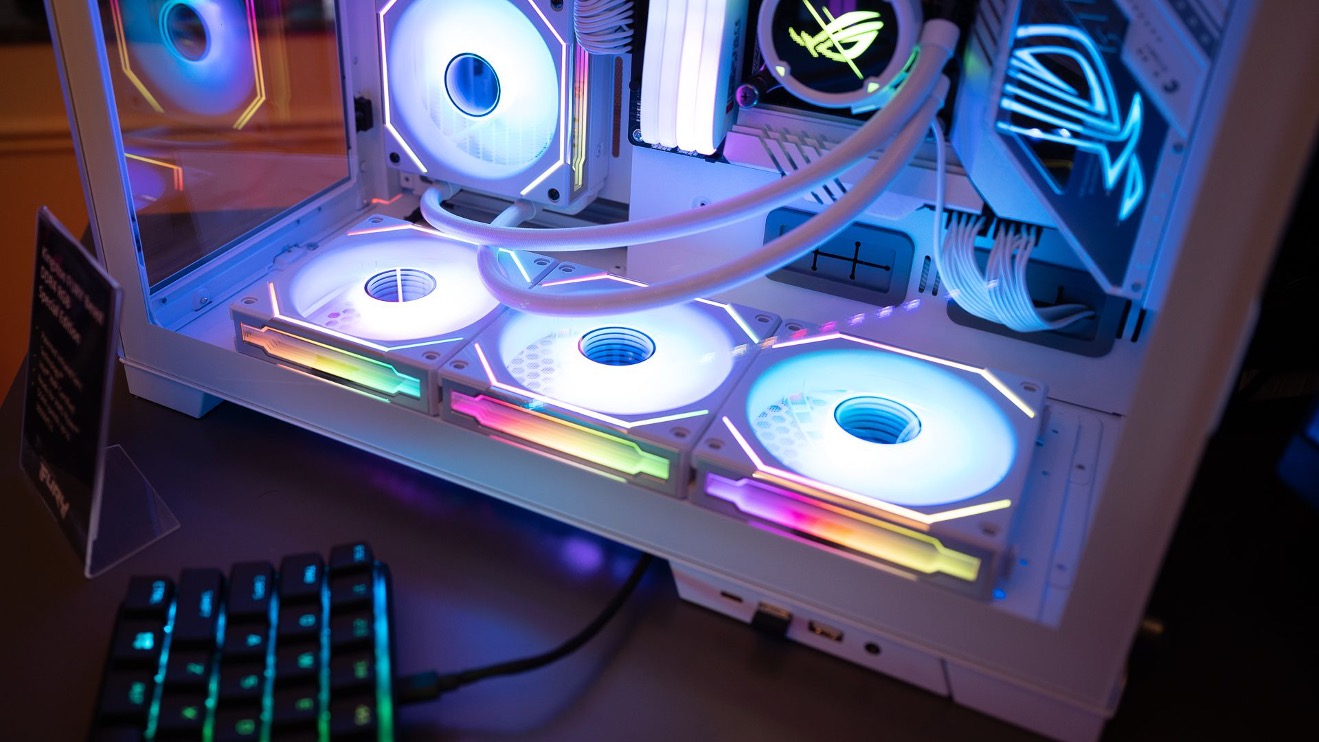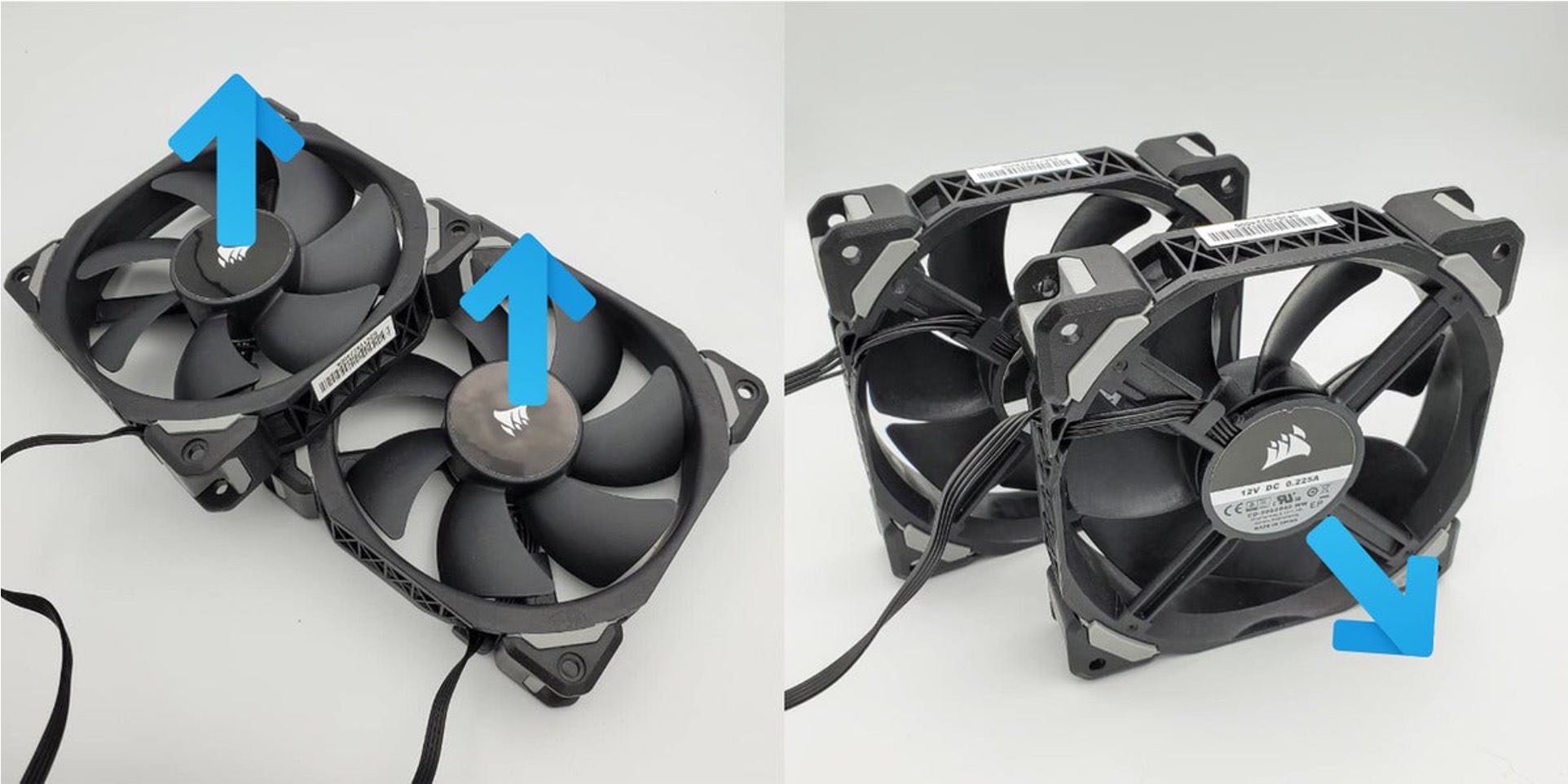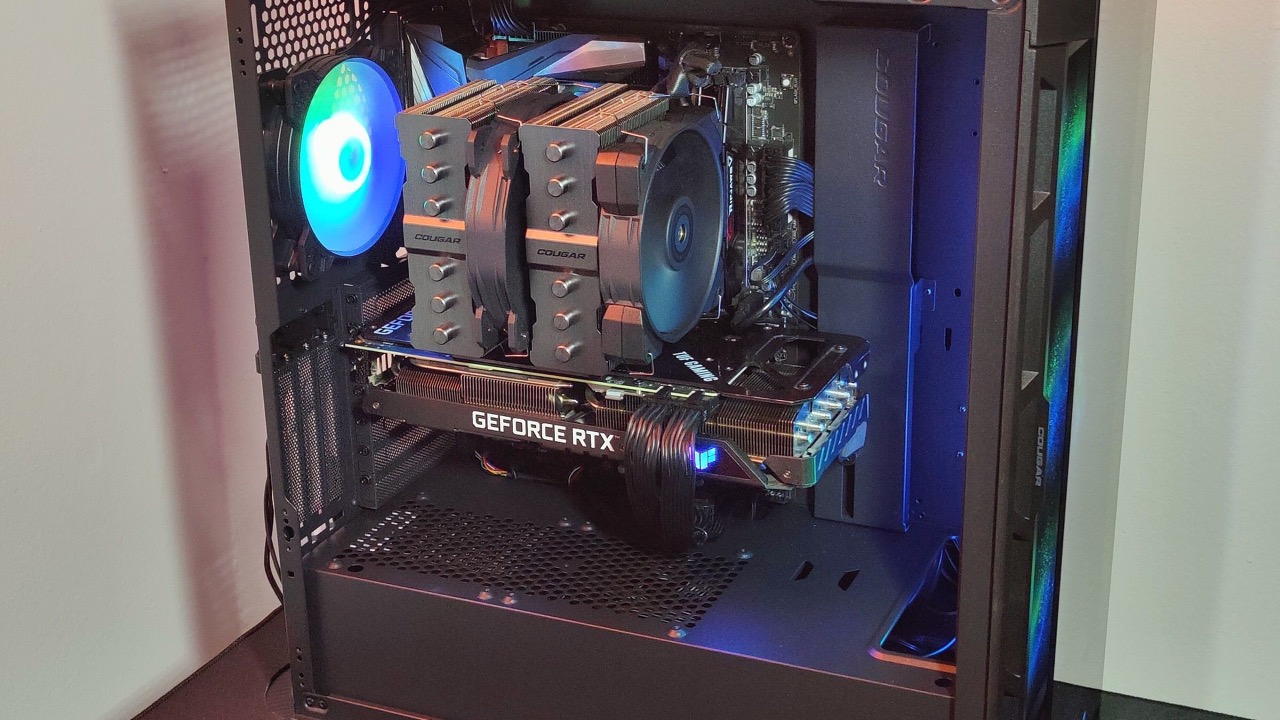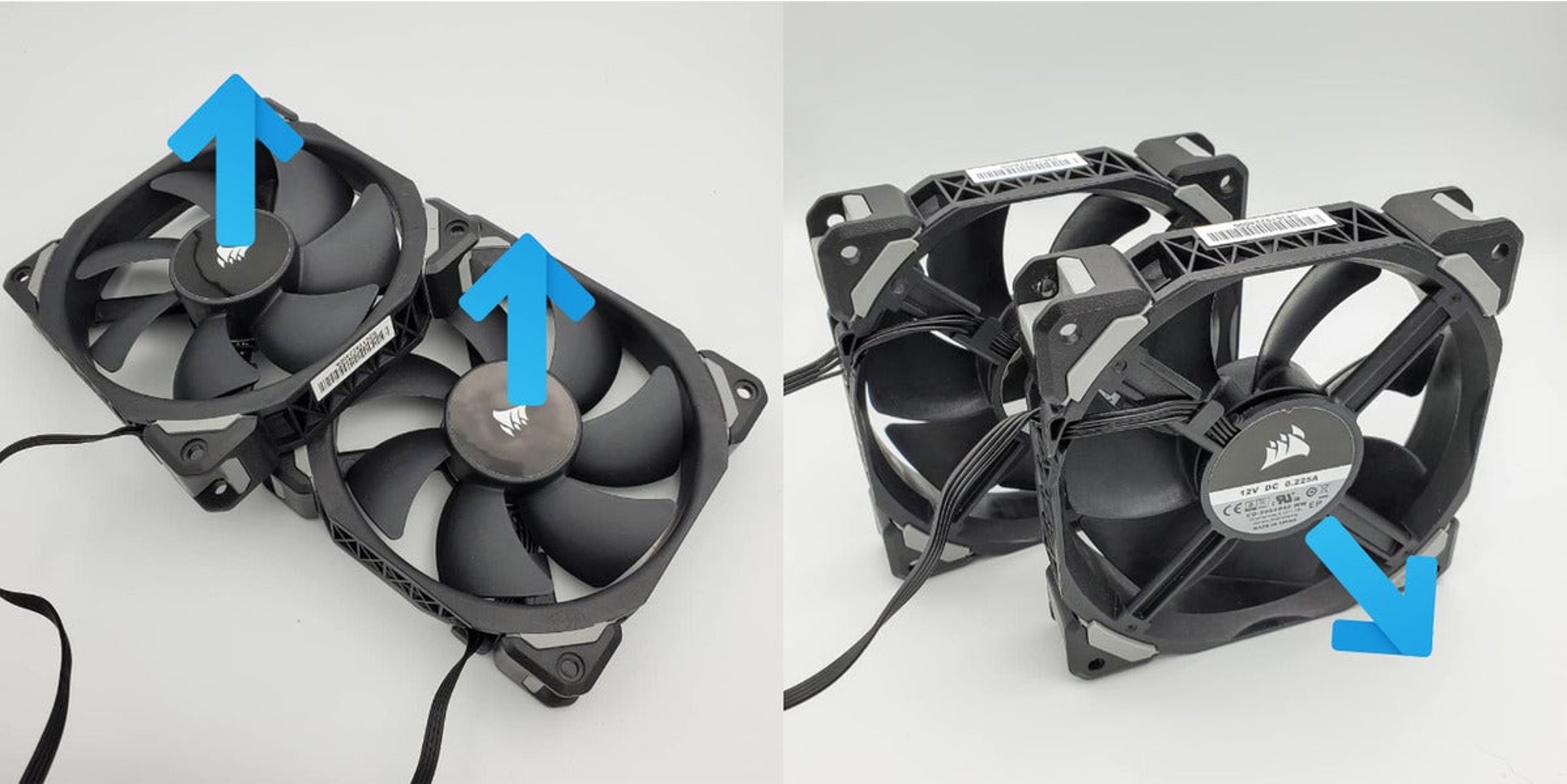Introduction
Welcome to our guide on case fans and their airflow directions! If you’ve ever built or upgraded a computer, you know that cooling is a critical aspect to consider. Maintaining optimal temperatures not only extends the lifespan of your components but also ensures optimal performance. One important component in the cooling system is the case fan.
A case fan is a device that helps to circulate air within the computer case, expelling hot air and bringing in cooler air. This airflow is crucial to keeping your components cool and preventing overheating. However, understanding the direction of the airflow and positioning your case fans for maximum efficiency can be confusing for many PC enthusiasts.
In this guide, we will explore the importance of proper airflow, how to determine the direction of your case fans, and specifically address the question, “Which way is exhaust?” Understanding the direction of airflow is essential for optimizing your cooling system and ensuring the longevity and performance of your PC components.
So, if you’re ready to demystify the world of case fans and learn more about their airflow direction, let’s dive in and explore the benefits of proper cooling and fan positioning!
What is a Case Fan?
A case fan, also known as a computer fan, is an essential component of a computer’s cooling system. It is a small, electrically powered device designed to circulate air inside the computer case. The primary function of a case fan is to dissipate heat generated by the CPU, graphics card, and other components, preventing them from becoming overheated.
Case fans work by pulling in cool air from outside the case and expelling hot air from inside the case. This continuous flow of air helps to maintain a lower temperature within the computer, ensuring that the components operate efficiently and stay within their desired temperature limits. Without proper cooling, computers can suffer from performance degradation, system instability, and even damage to the hardware.
Case fans come in various sizes, typically measured in millimeters, and are available in different types, including axial fans and centrifugal fans. Axial fans are the most common type and are characterized by their flat, blade-like design. They move air parallel to the axis of rotation, creating a direct airflow path. Centrifugal fans, on the other hand, have curved blades and move air in a perpendicular direction, making them suitable for restricted spaces or situations that require increased air pressure.
In addition to the main case fans, modern computer cases often feature additional fans called “intake” and “exhaust” fans. Intake fans draw in cool air from the outside and direct it towards the components that generate the most heat. Exhaust fans, on the other hand, expel hot air from inside the case to the outside. By strategically positioning intake and exhaust fans, you can create a positive airflow that efficiently removes hot air while bringing in fresh, cool air to keep your components at optimal temperatures.
Overall, case fans are crucial for maintaining the health and performance of your computer. Whether you’re a casual user or a hardcore gamer, understanding the importance of proper cooling and the role of case fans is essential for ensuring the longevity and optimal functionality of your PC components.
The Importance of Proper Airflow
Proper airflow is vital for maintaining optimal temperatures within your computer case. When components like the CPU and graphics card operate, they generate heat. Without efficient cooling, this heat can accumulate and cause performance issues, system instability, and potentially even damage to the hardware.
Achieving proper airflow involves both the intake of cool air and the removal of hot air. Intake fans bring fresh air into the case, while exhaust fans expel hot air. This continual movement of air helps to dissipate heat and maintain a steady temperature.
One essential factor to consider is the balance between intake and exhaust airflow. If there is an imbalance and the intake airflow is insufficient, hot air may not be adequately expelled, leading to higher temperatures. Conversely, if the exhaust airflow is insufficient, fresh air may not be drawn in efficiently, resulting in stagnant air and increasing the overall temperature inside the case.
Proper airflow also helps to reduce the build-up of dust and other contaminants. When air is flowing smoothly through the case, it carries away particles and prevents them from settling on the components. This can extend the lifespan of your hardware and reduce the need for frequent cleaning.
In addition to preventing overheating and reducing dust build-up, proper airflow can also contribute to a quieter computer. Efficient cooling allows fans to run at lower speeds, reducing noise levels. By strategically placing fans and optimizing airflow, you can create a more comfortable and quieter computing experience.
In summary, ensuring proper airflow is crucial for maintaining the health, performance, and longevity of your computer components. The right balance of intake and exhaust fans will effectively dissipate heat, prevent overheating, reduce dust accumulation, and contribute to a quieter system.
Positioning Your Case Fan
The positioning of your case fans plays a significant role in optimizing airflow and cooling efficiency. By strategically placing fans in specific locations within your computer case, you can ensure that cool air is directed towards the components that generate the most heat and that hot air is efficiently expelled.
Here are some key considerations for positioning your case fans:
- Front Intake Fans: Placing intake fans at the front of your computer case can help bring in cool air from the outside. This fresh air is then directed towards the components that generate the most heat, such as the CPU and graphics card. Make sure to position these fans in a way that allows them to draw in an ample amount of air.
- Top Exhaust Fans: Adding exhaust fans to the top of your case can help remove hot air that naturally rises. Since heat tends to accumulate near the top of the case, having top-mounted exhaust fans can aid in expelling this hot air, creating a more efficient airflow cycle.
- Rear Exhaust Fan: Most computer cases come with a rear exhaust fan pre-installed. This fan is typically positioned near the CPU area and expels hot air from the case. It helps create a flow of air that carries heat away from the components, contributing to better cooling performance.
- Side Intake Fan or Vent: Some computer cases offer side intake fans or vents. Placing a fan on the side panel can help bring in additional fresh air directly towards the graphics card and other components that may benefit from extra cooling. However, it’s important to note that not all cases have this feature, so make sure to check your case’s specifications.
- Bottom Intake Fan: Another optional placement is a bottom intake fan. It can help draw cool air from beneath the case, which is often cooler than the surrounding environment. This placement can be particularly beneficial if your computer is placed on a carpeted surface or in a dusty environment.
Remember to check the maximum number of fans that your case can accommodate and consider how the airflow will be affected by the positioning of these fans. Additionally, proper cable management and keeping the interior of your case clean and free from obstructions will contribute to optimal cooling performance.
By strategically positioning your case fans, you can create a well-balanced airflow that efficiently cools your components and helps maintain ideal operating temperatures.
How to Determine the Direction of the Fan
Determining the direction of a case fan is key to ensuring that it is installed correctly for optimal airflow. The direction of the fan can affect the cooling performance and overall efficiency of your computer’s cooling system. Here are a few methods to help you determine the direction of the fan:
- Check the Fan Blades: Look closely at the fan blades. Most case fans have angled blades that are curved towards one direction. The concave side of the blades indicates the direction in which the fan pushes air. As a general rule, the side with the brand logo or sticker is the side that the air is being pushed towards.
- Observe the Label or Arrow: Some case fans have labels or arrows on the frame indicating the direction of airflow. These labels are usually located on the side or back of the fan. The label or arrow may say “Airflow” or indicate the direction as an arrow, pointing towards the front (intake) or back (exhaust) of the fan.
- Test the Airflow with a Tissue or Smoke: If the fan is already installed and you’re unsure of its direction, you can hold a tissue or a small piece of paper near the fan. If the tissue gets pulled towards the fan, it means that the fan is an intake fan, pulling air in. If the tissue is blown away from the fan, it indicates that the fan is an exhaust fan, expelling air out.
- Inspect Fan Wiring: Take a look at the wiring of the fan. In most cases, the wire that attaches to the motherboard or fan controller is located on the side where the air is being pushed. If the wire is on the side where the air is being pulled, it means that the fan is installed in the reverse direction.
- Consult the Manufacturer’s Documentation: If you’re still unsure about the direction of the fan after trying the above methods, refer to the manufacturer’s documentation or the product specifications. The documentation should provide clear information on the airflow direction of the fan.
Once you have determined the direction of the fan, you can install it accordingly, ensuring that it promotes proper airflow within your computer case. Remember to position the fan in a way that aligns with the overall airflow direction, allowing it to efficiently bring in cool air or expel hot air.
By correctly determining the direction of your case fan, you can optimize your computer’s cooling system and achieve better thermal management for your components.
Which Way is Exhaust?
Understanding which way is the exhaust direction of a case fan is essential for configuring the airflow within your computer case. The exhaust direction refers to the flow of air out of the case, expelling hot air and heat generated by the components.
Here are some ways to determine the exhaust direction of a case fan:
- Reverse Engineer the Fan Blades: Look closely at the fan blades and their design. Typically, the curved side of the blades indicates the direction in which the air is being pushed. Since exhaust fans expel hot air, the curved side of the blades will face away from the interior of the case.
- Observe the Label or Arrow: Check for labels or arrows on the fan frame that indicate the airflow direction. If there is an arrow or label, it will likely point towards the exhaust direction, indicating the path that the air is being expelled.
- Consider the Fan Mounting: The positioning of the fan can provide clues about the exhaust direction. If the fan is mounted directly against an exterior vent or grille, it is likely an exhaust fan. This placement allows the fan to expel hot air from the case to the outside.
- Follow the Motherboard Fan Header: If the fan is connected to a motherboard header, check the header itself. The pins on the header are often labeled with indicators, such as “CHA_FAN” for chassis fan or “SYS_FAN” for system fan. The orientation of these labels can suggest the direction of the airflow.
- Inspect the Airflow with a Candle or Smoke: You can also utilize a lit candle or a source of smoke, such as an incense stick or a matchstick, held near the fan. If the flame or smoke is drawn into the fan, it indicates that the fan is an intake fan. However, if the flame or smoke is blown away from the fan, it confirms that the fan is an exhaust fan.
Remember, the exhaust direction of a fan is crucial for maintaining optimal airflow and ensuring that hot air is effectively expelled from your computer case. By correctly identifying the exhaust direction, you can position the fan accordingly to create a balanced airflow and efficient cooling system.
Ultimately, understanding the direction of your case fan’s exhaust airflow is an important step in optimizing the cooling performance of your system, preventing overheating, and ensuring the stability and longevity of your PC components.
Benefits of Having Exhaust Fans
Having exhaust fans in your computer case brings a variety of benefits to your system’s cooling performance and overall health. These fans play a crucial role in expelling hot air and maintaining optimal temperatures for your PC components. Here are some of the benefits of having exhaust fans:
- Effective Heat Dissipation: The primary function of an exhaust fan is to expel hot air from the case. By removing the heat generated by the CPU, graphics card, and other components, exhaust fans help to prevent overheating and ensure that your system operates within safe temperature ranges. This is especially important during intense gaming sessions or demanding tasks that can push your hardware to its limits.
- Improved Airflow: Having exhaust fans in your case helps to create a balanced airflow. As intake fans draw in cool air, exhaust fans work in conjunction to expel hot air, promoting a circulation loop that prevents stagnant air. This balanced airflow ensures that fresh air reaches the components that need to be cooled, contributing to better overall cooling efficiency.
- Reduction of Hot Spots: Without proper exhaust fans, hot air can accumulate in certain areas of the case, creating hotspots. These localized areas of high temperature can negatively impact the performance and lifespan of your PC components. By installing exhaust fans in strategic locations, you can effectively eliminate or minimize hotspots, ensuring that heat is evenly distributed and dissipated throughout the case.
- Prevention of Dust and Debris Build-up: Exhaust fans play a significant role in preventing the build-up of dust and debris inside your computer case. As hot air is expelled, it carries away particles that might settle on the components and hinder their performance. This not only improves the longevity of your hardware but also reduces the need for frequent cleaning and maintenance.
- Noise Reduction: Optimal cooling is not only crucial for temperature regulation but can also contribute to a quieter computer. By effectively removing hot air, exhaust fans help to keep fan speeds lower, resulting in reduced noise levels. This is particularly beneficial for users seeking a quieter computing experience or for those who engage in tasks that require minimal noise, such as audio production or video editing.
Overall, having properly positioned and functioning exhaust fans in your computer case brings numerous advantages. By maintaining optimal temperatures, promoting better airflow, preventing dust build-up, and reducing noise levels, these fans contribute to improving the performance, longevity, and overall stability of your PC components.
Optimizing Your Cooling System
Optimizing your cooling system is essential for ensuring the efficient operation and longevity of your computer components. By implementing some key strategies, you can enhance the cooling performance and maintain optimal temperatures within your computer case. Here are some tips to help you optimize your cooling system:
- Proper Fan Placement: Position your case fans strategically to create a balanced airflow. Intake fans should be placed at the front or side of the case to draw in cool air, while exhaust fans should be located at the back or top to expel hot air. By directing the airflow effectively, you can help prevent hotspots and ensure that each component receives adequate cooling.
- Cable Management: Neat cable management can improve airflow by keeping cables organized and out of the path of fans. Use cable ties or routing holes in your computer case to route cables away from fans and components. This allows for better airflow and minimizes obstructions that could impede cooling performance.
- Optimal Fan Speed: Adjust fan speeds to balance cooling performance with noise levels. Consider using your motherboard’s BIOS or fan control software to set fan profiles that ramp up speeds during heavy load periods and reduce speeds during idle or low-load scenarios. This ensures that your fans are operating efficiently and not unnecessarily generating excess noise.
- Regular Cleaning: Dust can accumulate on fans, heatsinks, and components over time, reducing cooling efficiency. Regularly clean your case fans, heatsinks, and filters to remove any build-up of dust. This helps maintain unobstructed airflow and prevents temperature increases due to dust accumulation.
- Consider Liquid Cooling: Liquid cooling systems, such as all-in-one (AIO) coolers or custom loops, can be more effective at dissipating heat compared to traditional air coolers. If you have high-performance components or engage in overclocking, liquid cooling might be worth considering as a more efficient cooling solution.
- Optimize Ambient Temperature: Ensure that your computer is in an environment with adequate ventilation and reasonable ambient temperatures. Avoid placing your computer near heat sources or in enclosed spaces where heat can accumulate. Keeping your computer in a well-ventilated area helps to maintain lower ambient temperatures, which in turn assists the cooling system in managing component temperatures more effectively.
- Monitor Temperature and Performance: Use software tools to monitor your computer’s temperature and performance metrics. By regularly checking these metrics, you can identify any abnormalities or components that might require additional cooling. This proactive approach helps in promptly troubleshooting any cooling issues and optimizing the performance of your system.
By implementing these strategies, you can optimize your cooling system to ensure that your computer components operate at optimal temperatures. This contributes to longer component lifespans, improved performance, and a more reliable computing experience.
Conclusion
Understanding the importance of proper cooling and airflow in your computer case is paramount to ensuring the longevity, performance, and stability of your PC components. Case fans play a vital role in maintaining optimal temperatures by circulating cool air and expelling hot air from the case.
In this guide, we have explored the concept of case fans, their airflow directions, and the benefits they bring to your system. We discussed the significance of proper airflow and highlighted the positioning of case fans for improved cooling efficiency. We also provided methods to help determine the direction of the fan and explained the benefits of having exhaust fans in your system. Additionally, we shared tips on optimizing your cooling system through practices such as proper fan placement, cable management, regular cleaning, and considering liquid cooling solutions.
By implementing these strategies and understanding how to optimize your cooling system, you can help mitigate the risk of overheating, prevent performance issues, and extend the lifespan of your valuable computer components. Remember to regularly monitor temperatures, clean your system, and adjust fan speeds as needed.
So, whether you are a casual computer user or an avid gamer, taking steps to optimize your cooling system is essential for preserving the health, efficiency, and overall performance of your PC. By prioritizing proper airflow and the correct positioning of case fans, you can create a cool, stable, and reliable computing environment for all your needs.







